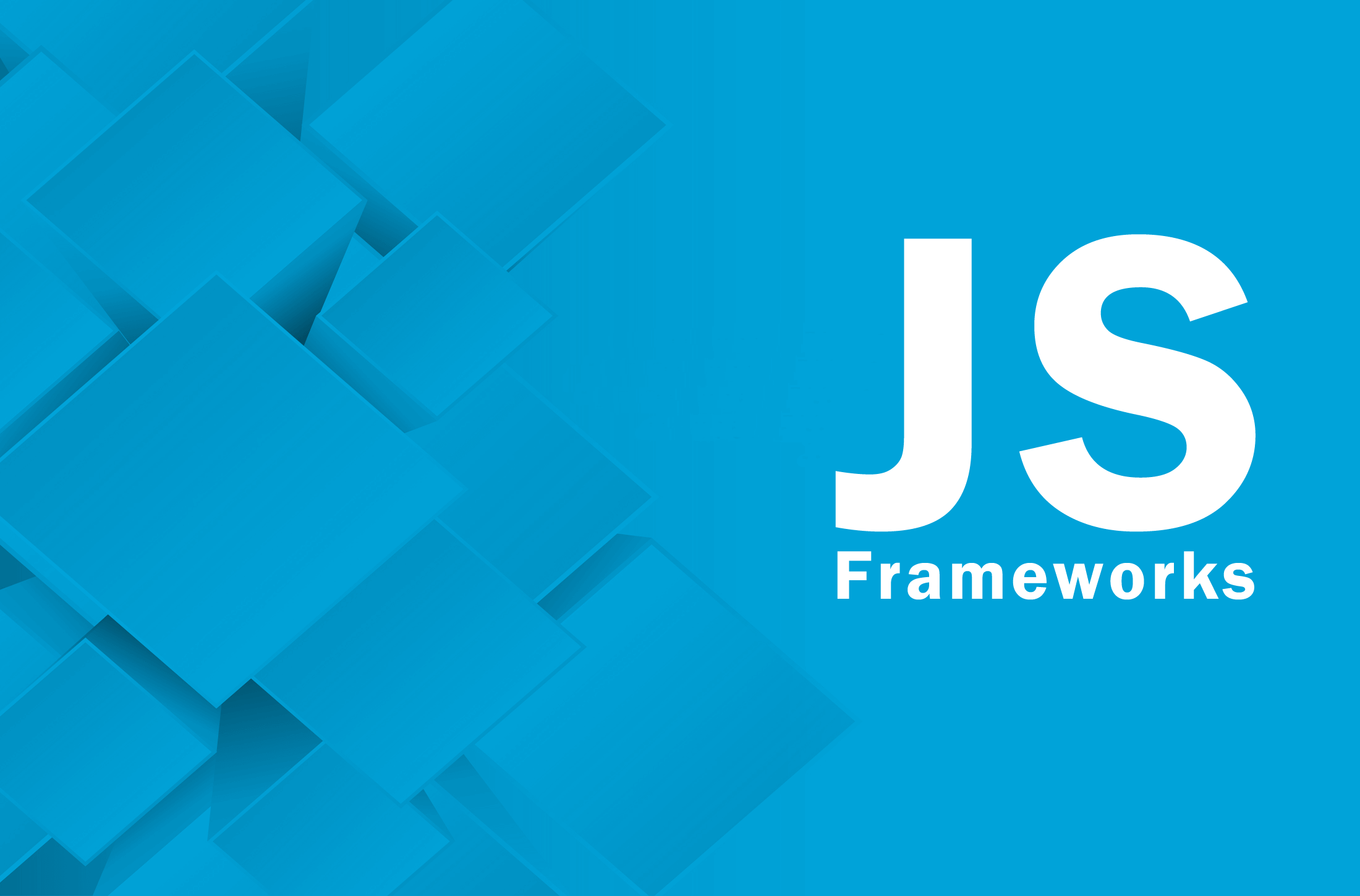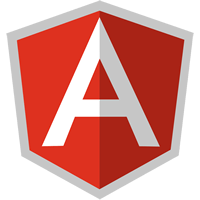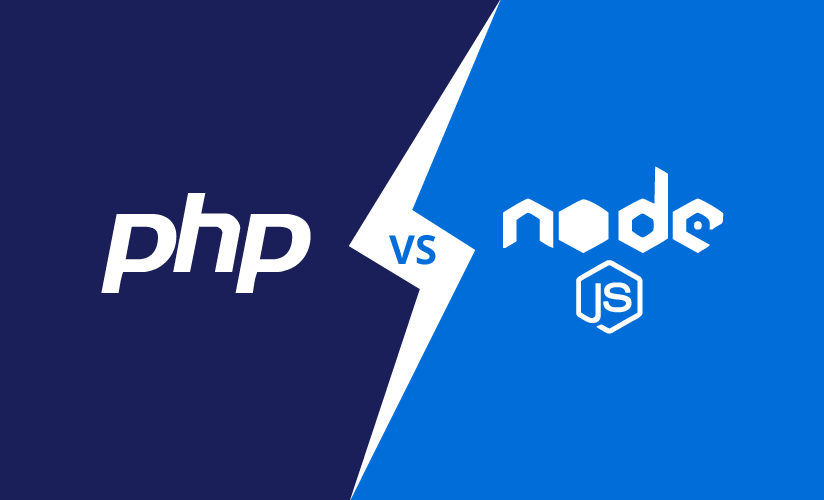Top 10 Javascript Frameworks

Here we go with our comparative study of the top 10 JavaScript frameworks.
1) AngularJS

AngularJS as the most popular framework evolved through several versions but its core efficiency as a Model View Controller (MVC) framework that can compile templates for rendering more dynamic HTML codes has remained a key factor behind its popularity. This template compiling ability helps it segregating the presentation logic frothe m state of presentation and business logic. Other key aspects of the framework include architecture based on components, far enhanced dependency injection and capability to build faster and smaller apps with later Angular versions like the AngularJS4.
Read Our Page: AngularJS Development Company
Here are the key pros and cons of the AngularJS framework.
Pros
- AngularJS is highly extensible to work alongside other libraries.
- AngularJS offers robust scopes of customisation as the developer can modify every feature or replace them as it suits for the development project in hand.
- It offers a comparatively faster development of apps with ease of coding.
- AngularJS allows testing of each part of the app separately with ease.
- AngularJS comes with a two-way binding feature that makes it easier to reflect the changes in the backend on the app UI.
Cons
- It is a bit complex framework compared to other js frameworks and so, for the angular developers, there is a learning curve to manage.
- From dependency injections to several other features, AngularJS comes with many aspects that traditional developers may find harder to cope up.
- AngularJS needs Javascript support from machines to develop the app.
2) ReactJS

React JS, unlike many other JavaScript frameworks that come with MVC pattern, is actually a non-MVC framework that only offers the View part of the Model View Controller pattern. It is just a simple frontend library which is unique for providing the ease of building an app with reusable components. Reusability of codes is one of the key strengths of ReactJS. It also allows creating virtual DOM to deal with the complexity of certain apps. It is best suited for building complex apps with demands of high performance.
Here are the pros and cons of ReactJS.
Pros
- ReactJS is the framework that can be utilised for both server side and client side.
- ReactJS comes with Virtual DOM to reduce the lag time and boost performance.
- ReactJS coming with a component-based architecture allows optimum reusability of codes.
- ReactJS offers high compatibility and can be used with several other libraries and frameworks.
Cons
- The biggest downside of ReactJS is that it only offers the View layer and so, for Motion and Control you need to take help from a separate toolset.
- Many ReactJS developers need extra time to cope up with its inline use of JSX and templates.
3) jQuery

jQuery is one of the most popular JavaScript frameworks to this day that allows building highly interactive websites and mobile apps very easily. In spite of coming with a very small library, this powerful framework can deliver a highly interactive and intuitive user experience with web apps. As per statistics, somewhere around 70% of the most visited and leading websites across the world uses jQuery in one way or the other.
Here are the pros and cons of jQuery.
Pros
- jQuery is capable to reduce almost all the issues concerning cross-browser compatibility.
- jQuery is capable to render highly complex JavaScript operations with the very small amount of coding input.
- With jQuery, you can easily incorporate Ajax functionality into your app.
- jQuery also comes loaded with a robust library of UI elements and effects.
Cons
- The big downside is you need to bear with the extra load of javascript code.
- For some developers, there can be a considerable learning curve leading to a longer development time.
4) Node.JS

The popularity of NodeJS as a server-side framework can be attributed to its lean and lightweight architecture and high level of efficiency ensured by it’s event-driven, non-blocking I/O model. Apart from this, NodeJS coming with an array of various JavaScript modules actually adds to the ease of development.
Here are the pros and cons of NodeJS.
Pros
- NodeJS is an asynchronous framework with an event-driven model to ensure optimum efficiency.
- It is very lightweight and is just ideal for rendering at lightning speed.
- Though it comes with a single thread it offers unparalleled scalability.
- Lightweight code and high-speed rendering ensure no buffering for web apps.
Cons
- It is not an ideal server-side framework for apps with complicated functionalities and apps demanding higher CPU power.
- NodeJS is not consistent in performance across all types of apps.
- NodeJS does not provide support for the relational database.
5) EmberJS

EmberJS as a JavaScript framework has been there for quite some time and it is still one of the popular ones with a component-based architecture. EmberJS comes with a rather complex architecture and this makes it one of the challenging frameworks for the developers to deal with. But once you have perfect command over this framework, it promises a very productive output.
Here are the pros and cons of EmberJS.
Pros
- Ember allows the developer to code in pure JavaScript without any excess syntax.
- EmberJS offering more priority to convention over configuration to ensure smaller code size and more organised filing.
- EmberJS offers very easy and comprehensive documentation.
- EmberJS coming with best practices inbuilt takes away any worries about bad codes.
- Once you become master of the intricacies of EmberJS, you can build apps faster than with many other JavaScript frameworks.
- The consistent project architecture makes it ideal for collaboration and teamwork.
Cons
- The biggest downside is the steep learning curve that developers willing to use EmberJS need to go through.
- It is a framework with several complicated layers and that can delay the development process until developers can fully master it.
6) Backbone.js

Though BackboneJS is a framework with the only Model and View architecture, the View part of the framework is too some extent capable of carrying some tasks of the Controller. The best thing about the BackboneJS framework is that it prefers to work with other libraries as and when needs arise but keeps itself simple and devoid of complexities for the sake of boosting performance. With the underscore library, the developer can access a gamut of helper functions ensuring easy cross-browser compatibility and performance.
Here are the pros and cons of EmberJS.
Pros
- BackboneJS library coming with annotated open source code allows developers easy access and usability. This allows any developer to study and use the framework for his project.
- Backbone.js is very lightweight weighing just 7.6 КВ when gzipped combining Backbone, Jquery and Underscore.
- It is a very compact library loaded with the minimalist set of classes capable to render all types of components required for developing web apps.
- It works to build the foundation of an app that subsequently can be extended by using other tools and libraries.
- It is a very flexible framework to work easily with various libraries and plugins.
Cons
- For beginners and inexperienced developers choosing the tools for their project can be a challenging task.
- It is not an ideal framework for complex and multilayered apps with strong demands of frequent extension and scalability.
7) Vue.js

VueJS is another powerful framework that has the distinction of combining some positive attributes of both Angular and React. Vue has the convention of storing components, logic and stylesheets in one file. This is very similar to the ReactJS framework. On the other hand, by allowing you to mix HTML layouts with JavaScript VueJS looks much similar to the AngularJS. For lightweight, simple and straightforward apps VueJS can be a better option than AngularJS.
Here are the pros and cons of VueJS.
Pros
- VueJS is very lightweight and smaller in size weighing just 18kb after gzipping.
- In spite of its small size, it often outperforms bulky and heavier frameworks in performance and speed.
- Vue offers unparalleled ease of development with a gamut of scalable templates.
- VueJS is equally useful for single page apps and for contributing functions to any existing apps with ease.
- VueJS comes with very detailed and comprehensive documentation to help any developer getting used to.
- The learning curve is very low and it requires just working knowledge of JavaScript and HTML, to begin with.
- Vue is a very flexible framework that allows developers to build quickly rendering apps run straight from the browser or more sophisticated range of apps loaded with JSX, ES6, routing and bundling.
Cons
- VueJS doesn’t have the backing of a robust community as in the case of React and AngularJS.
- From the creator of VueJS (a Chinese American) to the majority of the developer community, most of the inputs come from the non-English speaking community and most publicly available codes are written in Chinese. This causes a big barrier for English speaking developers.
8) Socket.IO

The socket has become very popular for building apps with real-time capability. Socket allows you to build apps with real-time communication between the server and the client. With Socket, developers can build apps to allow interactive real-time collaboration, streaming and communication. The framework also allows getting real-time stats about the app and web projects.
Here are the pros and cons of Socket.io.
Pros
- Coming with a very simple API it has a very low learning curve.
- Just because Socket is built over NodeJS, the gamut of async libraries belonging to NodeJS work great with Socket.
- It comes with clients for major mobile platforms such as Android and iOS.
- It offers easy and handy features such as auto-connect, rooms, namespaces and several others.
Cons
- For some time the framework seemed a little abandoned with no releases coming up.
- The bug tracker always shows a lot of pool requests and open defects.
- The framework comes with a very poor and non-optimised documentation for behaviour patterns, best practices and protocols.
- It offers no tests for the client-side library.
9) Express.js
ExpressJS is one of the most popular frameworks for building frontend functionalities of websites. It is often used by developers in combination with NodeJS which mainly looks after the backend. It is a very lightweight framework and works great with templating language. It is a good framework to build a single app web app or website for multiple mobile platforms.
Here are the pros and cons of ExpresssJS.
Pros
- ExpressJS is a simple framework with easy customisation options ana d lot of configuration options to meet various demands.
- ExpressJS offers easy integration with an array of template engines and can encourage using various middleware modules for additional tasks.
- You can create a REST API server
- You also keep a connection with important database systems such as MySQL, Redis, and the MongoDB.
Cons
- It is not a self-sufficient framework to look after both the frontend and backend development needs.
- It is not equipped enough for building complicated and multi-layered web apps.
10) Mithril

Mithril is a very lightweight framework which is particularly well known for its capability to update constantly with new contexts and approaches as the development process progresses. Though it is new, in a small span of time it stood out as a framework for some unique capabilities.
Here are the pros and cons of ExpresssJS.
Pros
- It comes with very lightweight and small API weighing just 7 KB.
- Unlike small-sized APIs of other frameworks that need to depend upon a lot of external libraries and plugins for even simple output, the API of Mithril is complete in spite of its tiny size.
- With Mithril you can build fast, powerful and feature-rich apps.
- While using Mithril, you do not need to learn a separate syntax for writing views.
- Mithril offers a very familiar architecture to people who are used to MVC.
- In spite of its small API size, it offers a detailed and large documentation.
Cons
- With a small API, it is not suitable for large, complicated and multilayered development projects.
- It still lacks the support of a robust development community and use-cases of too many successful apps for reference.
Conclusion
There are obviously several other good frameworks that equally deserve attention. But, there can be no out of the box judgment regarding any of these frameworks. Depending upon the nature of your project, developer skills and experience you need to choose the ideal JavaScript framework that suits your project best.
We’re honored to mention that our efforts have been recognized by renowned B2B review and research platforms such as GoodFirms, Clutch, MirrorView, and many more.
Similar Posts

PHP vs Node.js – Which is the Better Programming Language?
So, before understanding which is a better programming language, it is essential to know why they are different. PHP is a server-side script. It is one of the most popular, mature, and ubiquitous scripts available on the web. On the other hand, Node.js is not a script at all. It’s one of the back-end development […]...

Best Practices for Writing Clean and Maintainable Code in Software Development
Did you know that bad code costs companies billions of dollars every year in maintenance and debugging? According to a report, developers spend up to 50% of their time on debugging issues arising from messy and unclear code. That is the time spent that could be used in developing new features or performance improvement. Clean […]...

MEAN vs MERN: Which Stack is Right for Your Next Project?
Embarking on a new web development project? Choosing the right technology stack can make all the difference in your project’s success. In the realm of web development, two popular stacks have emerged as powerful contenders: MEAN Stack Development and MERN Stack Development. But which one is the perfect fit for your next venture? In this […]...









